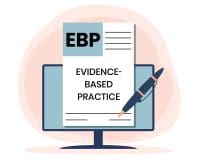Predatory journals prey on unsuspecting authors, luring them with promises of quick peer review and publication. The catch is that these journals put profit above scientific endeavor by not doing due diligence in assessing information accuracy. They charge authors unreasonable fees to publish their work and aren’t picky about whether that work is valid or valuable. (These fees are different from article processing charges, which cover reputable publishers’ costs of making articles open access, freely available to all.)
Predatory journals create problems at the macro and micro levels. At the macro level, inaccurate information can end up in legitimate databases, where it continues to be spread through others’ citations of the article. Ultimately, this can lead to clinicians making faulty care and treatment decisions.
At the micro level, publishing in a predatory journal can damage your professional reputation and close down dissemination avenues for your work. For example, if you discover after publication that the journal is predatory, you likely won’t be able to republish your work in a legitimate journal.
I’m often asked how to avoid predatory journals. I refer nurses to the invaluable website Think. Check. Submit., which distills journal choice into those three simple steps.
Think.
Authors should consider whether the journal is reputable. Try to choose journals that you read regularly or know by reputation. If you aren’t familiar with a journal, check with colleagues publishing on topics similar to your own. If they don’t know about the journal, why would you want to publish in it?
To enhance the likelihood that you’ll choose a reputable journal, check if it’s on the list of nursing journals that have been vetted by Nurse Author & Editor and the International Academy of Nurse Editors (INANE).
Check.
The Think. Check. Submit. website provides a checklist authors can use to assess whether a journal is legitimate. You also can access a list of questions from the INANE Predatory Publishing Practices Collaborative. You want to assess factors such as the journal’s process for ensuring content quality, whether it’s listed in reputable databases such as the Cumulative Index of Nursing and Allied Health Literature (don’t rely on the journal for this, check yourself), and the expertise of the editor and editorial board. When it comes to items such as unusually short peer review times, remember the adage, “If it seems too good to be true, it probably is.”
Another resource is Cabells Predatory Reports, but you have to pay to access it. Check with your organization’s library to see if someone can check for you.
Submit.
Only submit if you feel confident that the journal isn’t predatory and you believe your article will be easily discoverable by others. You want your information reach as many people as possible.
References
American Medical Writers Association, European Medical Writers Association, International Society for Medical Publication Professionals. AMWA–EMWA–ISMPP joint position statement on predatory publishing. Curr Med Res Opin. 2019;35(9):1657-8. doi:10.1080/03007995.2019.1646535
INANE “Predatory Publishing Practices” Collaborative. Predatory publishing: What editors need to know. Nurse Author & Editor. 2014;14(3). doi: 10.1111/j.1750-4910.2014.tb00183.x
Saver C. How to select and query a journal. In: Saver C, ed. Anatomy of Writing for Publication for Nurses. 4th ed. Indianapolis, IN: Sigma Theta Tau International; 2021;31-47.


Whether you’re considering your first or your 50th publication, want to contribute to your organization’s newsletter, or crave to be a better communicator online and in print, I hope you’ll find what I write helpful. The nurse publishing colleagues I’ve learned from over the years (many of whom are contributors to my book) may not be listed by name, but I’m grateful for their willingness to share. In that spirit, I’m looking forward to sharing with you! If you have feedback, feel free to email me at csaver@healthcommedia.com.



















